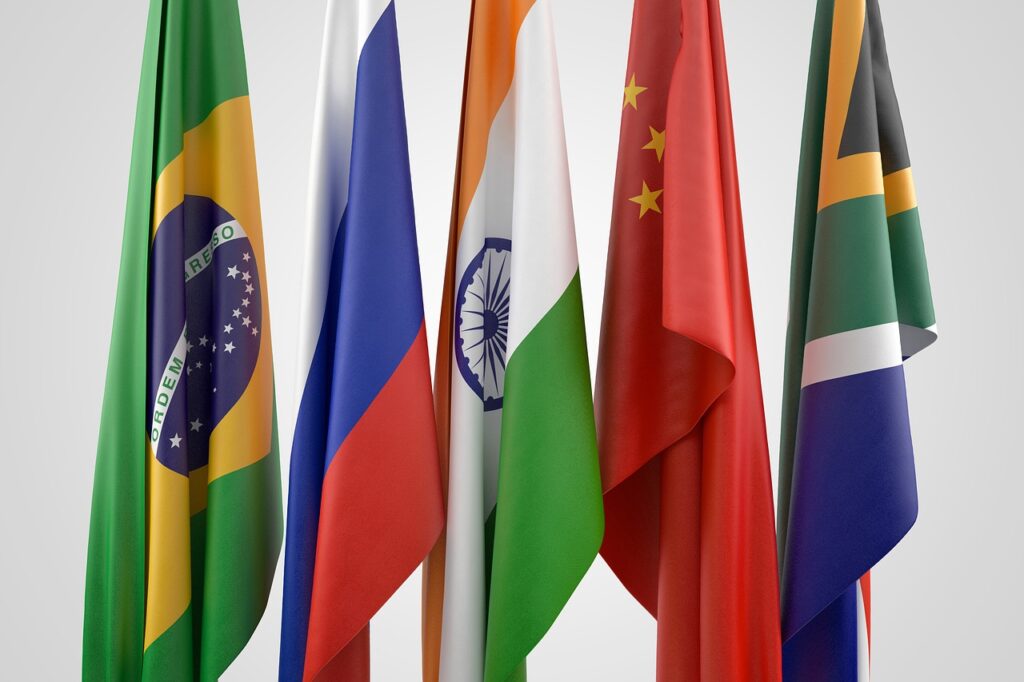- The term BRICS is an acronym for Brazil, Russia, India, China, and South Africa.
- Goldman Sachs created the term BRIC in 2001 for Brazil, Russia, India, and China in the belief that these economies would dominate global growth by 2050.
- Saudi Arabia, Iran, Ethiopia, the United Arab Emirates, Egypt, and Argentina were invited to join BRICS in 2023.
- BRICS sees itself as a counter to the traditional Western-led global order, with many member states seeing the organization as a way to boost their influence around the world.
- By 2050, the BRIC cluster could grow to a size larger than the G6 (the G7 minus Russia), and the world’s largest economies would therefore look drastically different in four decades.
The nations of Brazil, Russia, India, China, and South Africa make up the BRICS grouping, which is an acronym. Jim O’Neill, an economist with Goldman Sachs, first conceptualized the BRIC currency in 2001. At the time, South Africa wasn’t included in the acronym, as O’Neill believed that by 2050, the four economies that make up the BRIC group would have come to control the economies of the entire world. The year 2010 saw the addition of South Africa to the list. The BRICS countries function as a loose group that aims to improve economic cooperation among member nations and increase their economic and political status around the globe.
As a result of low labor costs, favorable demographics, and rich natural resources at a time of global commodity booms, Brazil, Russia, India, China, and South Africa ranked among the world’s fastest-growing emerging market economies for years.
The Goldman Sachs thesis did not predict that these countries would join a political alliance akin to the European Union (EU), nor did it even imply that they would establish a formal commercial union. Instead, the investment banking business stated that these countries have the capacity to establish a powerful economic bloc, despite the fact that the firm acknowledged that its estimates were optimistic and relied on important policy assumptions.
However, the assumption was that economic strength would eventually lead to political influence, and in fact, leaders from BRICS countries frequently attended summits together and frequently acted in a manner that was congruent with each other’s interests.
What is the goal of BRICS?
Cooperation, economic advancement, and increased influence in global affairs are the primary aims of the BRICS nations. The goals include economic cooperation, financing for development, political coordination, social and cultural exchanges, technological and innovative advancement, peaceful and secure growth, and sustainable development.

According to BRICS, the member countries’ combined GDP contributes 31.5% of the world’s GDP, which is more than the G7 countries’ 30.7% share.
The history behind BRICS’ goals
Many of the BRICS member states see the organization as a way to expand their influence around the world, which leads them to see it as an alternative to the traditional global order that has been in charge in the West. However, a large number of the countries have divergent viewpoints on essential aspects, such as whether or not there should be transparency and whether or not the approach should be balanced. This may impede the expansion of the group.
The BRICS conference is held once a year, and during this time, members of the group and heads of state get together to discuss ways to improve economic cooperation between the member states. This group functions as an informal collection of nations. Each year, the position of chairman of the organization is given to the head of state of one of the countries that is a member of the group. The group initially got together informally in 2006, but their first official gathering wasn’t until June 16, 2009, and it took place in Yekaterinburg, Russia.
According to BRICS, over 40 countries have expressed interest in becoming members of the organization. This is reportedly due to the economic might of the member nations, as well as the desire to break away from Western influence to some extent. At their meeting in 2023, the BRIC nations declared that they would be inviting other countries to join the organization. On January 1, 2024, Argentina, Ethiopia, Iran, Saudi Arabia, and the United Arab Emirates will all be elevated to the status of full members of the organization.




